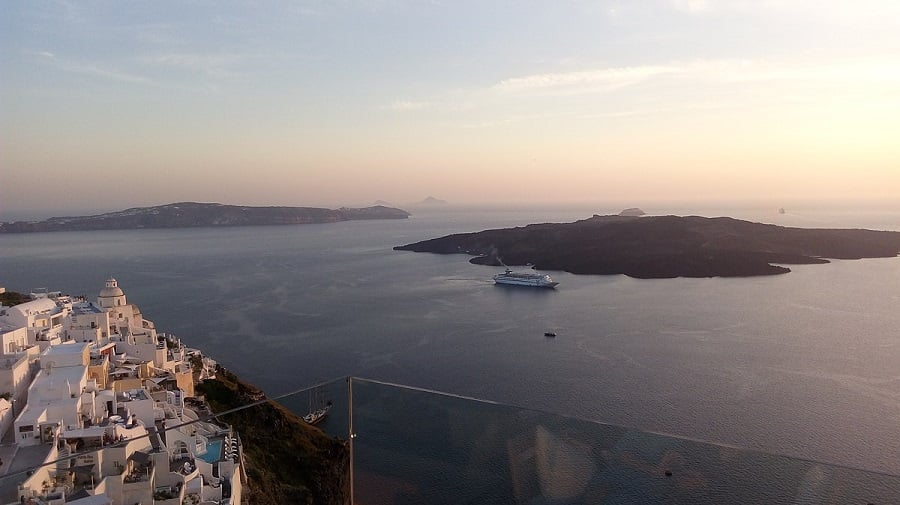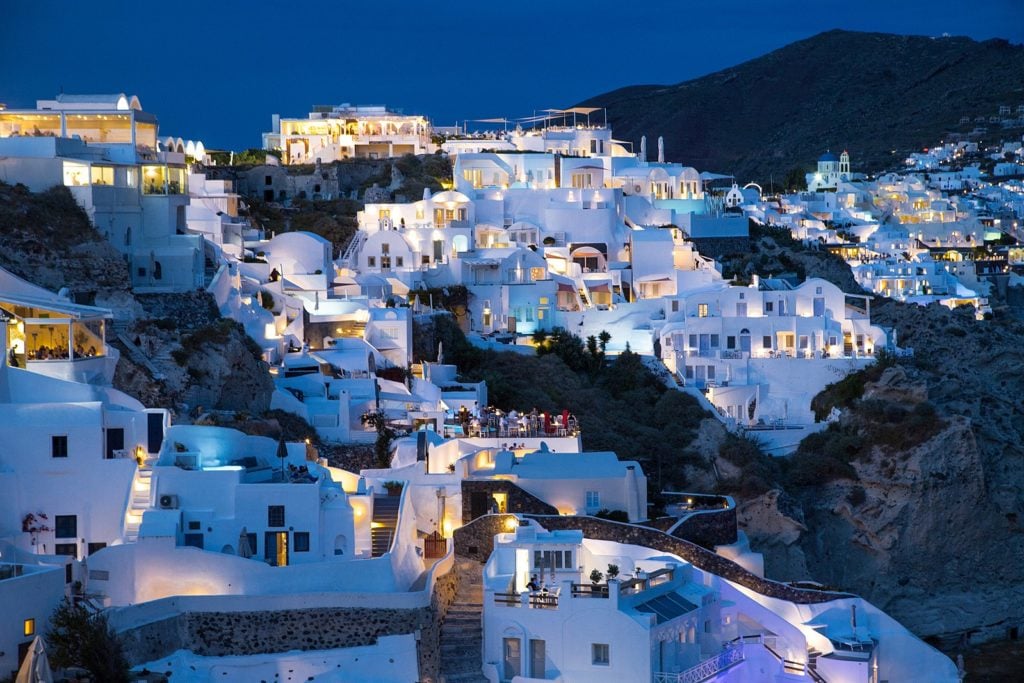
The mystery surrounding the formation of Santorini’s volcano is one that still puzzles archeologists and scientists today. Santorini is a place of great beauty visited by millions of tourists each year.
It is an island well known for its beautiful hotels, beaches, sparkling white-washed houses, and dramatic landscape, all of which make the island one of the most captivating in Greece. For that reason, Santorini ranks at the top of the list in Greece as a honeymoon and wedding destination.

Yet, what also draws many visitors is the beauty and mystery of Santorini’s volcano, amongst the world’s largest active ones, and the ancient secrets that lie buried deep within. Indeed, the view from Fira and Oia over the volcano is one of the most familiar worldwide. The exact date of the volcano’s formation is, nonetheless, still uncertain and remains a question of debate.
Santorini, or Thira, as it is known in Greece, was an island built upon the overflow of lava, creating shield volcanoes. These experienced several eruptions prior to the last one around 1620 BC, thus forming the volcano.
About 1,400 years later came the surrounding islands of New Kameni and Palaea Kameni after another series of smaller eruptions. Most of the island sunk following that eruption, inspiring the myth that it was the lost city of Atlantis. Neither historians nor archeologists have ever been able to prove this as fact, however.
What we know about it
The volcano that formed Santorini’s caldera was one of the largest eruptions of the Holocene epoch. This was a period that began after the last glacial period some 11,600 years ago.
It sank 1,600 years before Pompeii and was also a significant archeological site of the 2nd millennium BC—the years between the Middle and late Bronze Age. Akrotiri Santorini, the city preserved in ashes, is just one of many fine examples of this period. The precise year of its creation is still a major point of contestation.
In the early 20th century, archeologists theorized that Santorini’s volcano formed around 1500 BCE. In the late 1970s, however, radiocarbon dating indicated that it was more than likely sometime in 1600 BCE. Sturt Manning, distinguished professor of Arts and Sciences in Classical Archaeology in the College of Arts and Sciences at Cornell University, may be the man with the answer.

Close examination of available data combined with avant-garde statistical analysis has enabled him to narrow down that time frame. According to his findings, the most likely date for the formation of the volcano on Santorini is sometime between 1609 to 1560 BCE.
That means it actually occurred during the Second Intermediate Period of Egypt when Hyksos of Canaanite origin controlled Lower Egypt. Whilst not exactly precise, it does give those wondering a more accurate idea of the historical period surrounding the event.
What we have yet to discover
Manning published his paper “Second Intermediate Period Date for the Thera (Santorini) Eruption and Historical Implications,” in September 2020.
When speaking about Santorini’s volcano, he stated “This has been the single most contested date in Mediterranean history for over 40 years.”
“It’s been one of these endless disputes, to the point where people just say, ‘There’s a problem here, [and] we can’t solve it, [so] let’s move on,’” he reasoned.
“I’m hoping with this paper people may suddenly go, ‘You know what, this actually limits and defines the problem in a way that we’ve never been able to do before, and narrows it down to where, usefully, we can say it’s in the Second Intermediate Period,” he explained. “So we should start writing a different history.'”
As for the possibility of future eruptions, that is a question for the I.S.M.O.SA.V. (Institute for the Study and Monitoring of the Santorini Volcano), a non-profit organization which promotes the island’s volcanic research.
See all the latest news from Greece and the world at Greekreporter.com. Contact our newsroom to report an update or send your story, photos and videos. Follow GR on Google News and subscribe here to our daily email!



